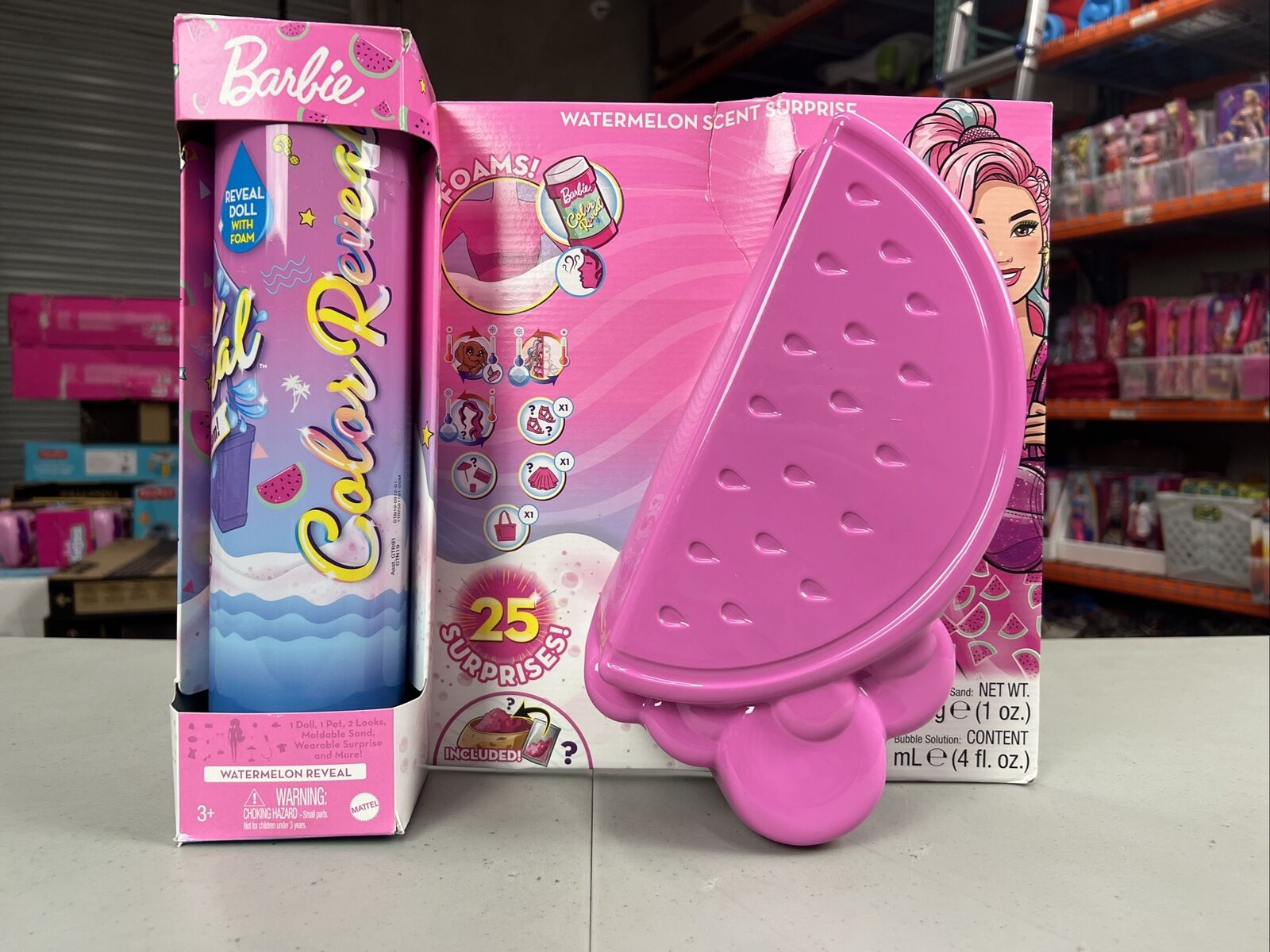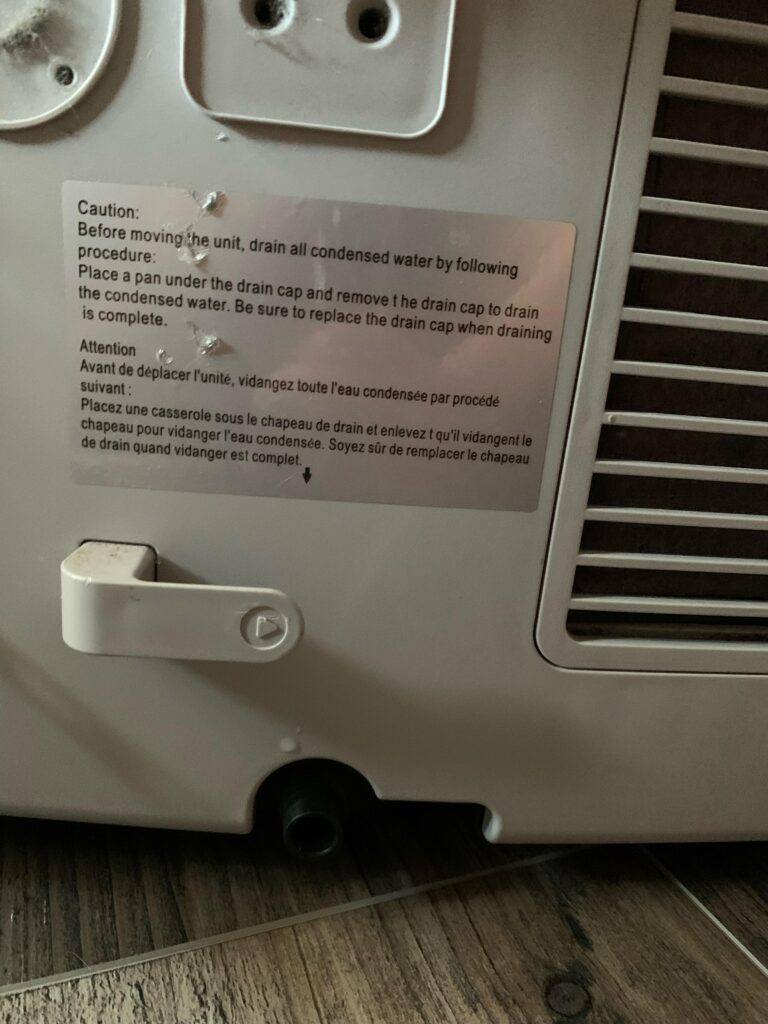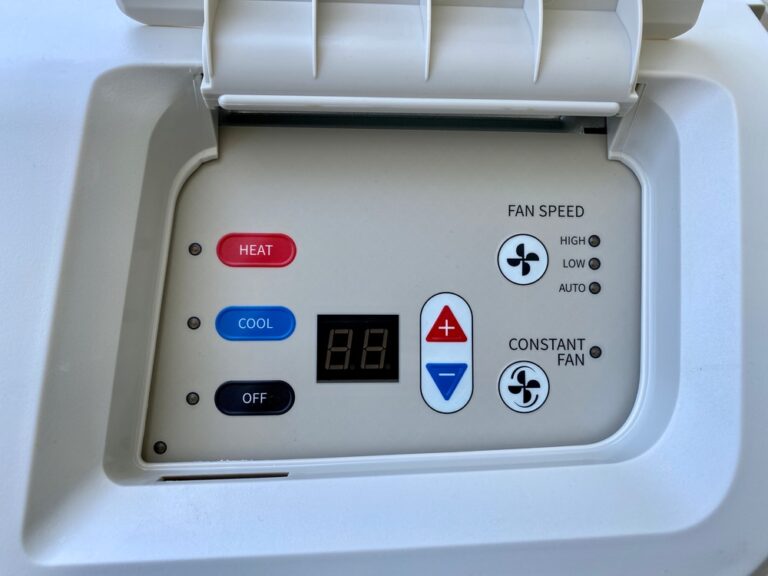Is There Supposed to Be Styrofoam in My Air Conditioner? Unveiling the Surprising Connection
Yes, there may be styrofoam in your air conditioner. Now, let’s explore why Styrofoam is used in air conditioners and its purpose.
Air conditioners often contain Styrofoam as it serves as an insulating material. This helps to prevent energy loss and maintain the desired temperature inside the unit. Styrofoam is lightweight, durable, and a great thermal insulator, making it ideal for this purpose.
By insulating the internal components, it helps reduce heat exchange with the surroundings, resulting in more efficient cooling. So, if you spot Styrofoam in your air conditioner, it’s there for a good reason. Now that we understand its purpose, let’s dive deeper into the functioning of an air conditioner and the different components involved.
Understanding The Functionality Of Styrofoam In Air Conditioners
Styrofoam plays a crucial role in air conditioners, providing insulation and preventing condensation. Its presence in your unit is completely normal and ensures optimal functionality.
Air conditioners are complex systems designed to keep us cool and comfortable during those scorching summer months. But have you ever wondered about the role of styrofoam in your air conditioner? In this section, we’ll delve into the functionality of styrofoam and its impact on insulation and soundproofing within air conditioners.
How Styrofoam Improves Insulation In Air Conditioners
Styrofoam insulation plays a crucial role in air conditioners by preventing heat transfer and optimizing energy efficiency. Here’s how it does this:
- Enhanced Thermal Resistance: Styrofoam is a great insulating material due to its low thermal conductivity. This means it can effectively minimize the transfer of heat between the different components of the air conditioner, reducing energy loss and keeping the cold air inside where it belongs.
- Reduced Condensation: Another benefit of styrofoam in air conditioners is its ability to prevent condensation. By providing a barrier between the cold evaporator coil and the warmer air, styrofoam minimizes the risk of moisture buildup, which can lead to mold growth and decreased performance.
- Noise Reduction: In addition to insulation, styrofoam also contributes to noise reduction within air conditioners. By absorbing and dampening vibrations from moving parts, styrofoam helps to minimize the operating noise of the unit, enabling a quieter and more peaceful indoor environment.
The Impact Of Styrofoam On Soundproofing In Air Conditioners
When it comes to soundproofing, styrofoam proves to be a valuable component in air conditioners. Here are the ways in which it contributes to noise reduction:
- Vibration Absorption: Styrofoam’s ability to absorb vibrations helps to reduce the transmission of noise generated by the motor, compressor, and other moving parts. By acting as a cushion, it prevents these vibrations from resonating throughout the unit and into the surrounding space.
- Echo Suppression: The interior of an air conditioner can be a breeding ground for unwanted echoes and reverberation. Styrofoam’s sound-absorbing properties help to minimize these echoes, resulting in a quieter operation and an overall more pleasant environment.
- Enhanced Privacy: By reducing the noise emitted by air conditioners, styrofoam helps to maintain your privacy. Whether you’re working, watching TV, or simply relaxing, a quieter air conditioner ensures that outside disturbances are kept to a minimum.
Styrofoam in air conditioners serves multiple functions, including insulation and soundproofing. Its thermal resistance properties improve efficiency and prevent condensation, while its vibration absorption capabilities contribute to noise reduction. With styrofoam as a key component, air conditioners can effectively keep you cool and comfortable without disturbing the tranquility of your living space.

Credit: www.amazon.com
The Surprising Connection: Styrofoam And Energy Efficiency In Air Conditioners
Did you know that the presence of Styrofoam in your air conditioner can actually improve its energy efficiency? This surprising connection helps to insulate the unit, reducing energy loss and potentially saving you money on your utility bills.
Styrofoam, a common material used in packaging and insulation, may not be the first thing that comes to mind when thinking about energy efficiency in air conditioners. However, there is a surprising correlation between Styrofoam and reduced energy consumption in these cooling units.
In this section, we will explore how Styrofoam enhances energy efficiency in air conditioners and the benefits it brings.
How Styrofoam Enhances Energy Efficiency In Air Conditioners:
- Effective insulation: Styrofoam is well-known for its excellent insulation properties. When used in air conditioners, it acts as a barrier, preventing the escape of cool air and blocking the intrusion of warm air from the surroundings. This insulation helps maintain a consistent temperature inside the unit, reducing the workload on the compressor.
- Minimizes heat transfer: By using Styrofoam, air conditioner manufacturers minimize heat transfer within the unit. The insulation properties of Styrofoam prevent the transfer of heat between different components, such as the evaporator coils and the condenser coils. This reduced heat transfer ensures more efficient cooling, leading to lower energy consumption.
- Reduces condensation: Condensation is a common issue in air conditioning units, as humidity in the air cools and turns into water droplets. However, Styrofoam can help mitigate this problem. Its insulating properties prevent excess moisture from accumulating on the vital components of the unit, reducing the chances of condensation. As a result, the air conditioner operates more efficiently and consumes less energy.
- Dampens noise and vibration: Another advantage of using Styrofoam in air conditioners is its ability to dampen noise and vibration. It acts as a sound buffer, absorbing vibrations and reducing the noise generated by the air conditioner. This not only makes the unit more comfortable for users but also improves its energy efficiency by minimizing the energy lost due to vibration.
- Lightweight and cost-effective: Styrofoam’s lightweight nature makes it an ideal material for air conditioner construction. Its use reduces the overall weight of the unit, making it easier to transport and install. Additionally, Styrofoam is relatively inexpensive compared to alternative materials, making it a cost-effective option for air conditioner manufacturers.
- Environmentally friendly: Styrofoam is recyclable, and some manufacturers even use recycled Styrofoam in the production of air conditioners. By incorporating recycled Styrofoam, air conditioners reduce their environmental impact and promote sustainable practices.
By harnessing the numerous benefits of Styrofoam, air conditioner manufacturers can enhance energy efficiency and reduce the environmental footprint of these cooling units. Styrofoam’s insulation properties, heat transfer reduction, condensation prevention, noise damping, lightweight nature, cost-effectiveness, and recyclability all contribute to more efficient air conditioning systems.
Debunking Common Myths: Styrofoam And Health Concerns In Air Conditioners
Styrofoam in air conditioners is a common myth but it actually serves a purpose. It acts as an insulator to prevent condensation and improve cooling efficiency. Rest assured, it poses no health concerns when used properly.
Air conditioners play a crucial role in keeping our homes and offices comfortable during the scorching summer months. While many of us are familiar with the components that make up an air conditioner, there is often confusion surrounding the use of Styrofoam in these units.
In this section, we will address misconceptions about Styrofoam and its potential health risks, and explore the importance of using safe and eco-friendly Styrofoam alternatives.
Styrofoam, or expanded polystyrene foam, is commonly used in various industries due to its insulation properties and cost-effectiveness. However, there have been concerns raised about the use of Styrofoam in air conditioners and its impact on our health. Let’s separate fact from fiction and clear up any misunderstandings:
Addressing Misconceptions About Styrofoam And Its Potential Health Risks:
- Styrofoam in air conditioners releases harmful chemicals: Contrary to popular belief, Styrofoam used in air conditioners is not known to release harmful chemicals into the air. The foam insulation primarily acts as a barrier, preventing temperature transfer and increasing energy efficiency.
- Styrofoam can cause respiratory issues: While it is true that inhalation of Styrofoam particles can cause irritation, the concentration of particles released from air conditioner units is negligible. Proper maintenance and regular cleaning will help minimize any potential risks.
- Styrofoam can contribute to allergic reactions: Allergic reactions triggered by Styrofoam in air conditioners are extremely rare. However, if you have a known allergy to polystyrene, it is advisable to consult a professional to explore alternative insulation options.
The Importance Of Using Safe And Eco-Friendly Styrofoam Alternatives:
- Environmentally-friendly options: In recent years, the demand for eco-friendly insulation materials has increased significantly. Several alternatives to Styrofoam, such as recycled cotton, sheep’s wool, and soy-based foam, are now available as safe and sustainable options for air conditioner insulation.
- Health considerations: Choosing safe and eco-friendly Styrofoam alternatives can provide peace of mind to those concerned about potential health risks. By opting for these alternatives, you can ensure better indoor air quality and reduce the probability of respiratory issues.
- Energy efficiency: One of the key advantages of using safe and eco-friendly Styrofoam alternatives is improved energy efficiency. These alternatives are designed to provide excellent insulation properties, helping to reduce energy consumption and lower utility bills.
When it comes to your air conditioner, it is essential to prioritize both your health and the environment. Understanding the reality behind the myths surrounding Styrofoam can empower you to make more informed choices when selecting the insulation materials for your air conditioner.
By opting for safe and eco-friendly alternatives, not only are you safeguarding your well-being but also contributing to a greener future.
Eco-Conscious Solutions: The Future Of Styrofoam Use In Air Conditioners
Discover the eco-conscious future of styrofoam use in air conditioners, as experts debate its necessity and explore sustainable alternatives. Understand the role of styrofoam in your air conditioner and the potential for environmentally friendly solutions.
Exploring Sustainable Alternatives To Styrofoam In Air Conditioners
Air conditioners are essential appliances for keeping our homes and workplaces comfortable during hot summer months. However, many people are concerned about the impact of the materials used in their air conditioners on the environment. One particular material that has raised eyebrows is Styrofoam.
In this section, we will delve into sustainable alternatives to Styrofoam in air conditioners, exploring the new horizons in eco-conscious cooling solutions.
- Polystyrene-free insulation: Manufacturers are now focusing on creating air conditioners without Styrofoam insulation. They are opting for environmentally friendly insulation materials that have minimal carbon footprints. These alternatives not only provide excellent insulation but also reduce the overall environmental impact of the product.
- Natural fiber insulation: Some companies are finding innovative ways to replace Styrofoam with natural fiber insulation materials. These materials, such as cotton, sheep’s wool, or cellulose from recycled paper, not only offer thermal insulation but also have renewable and biodegradable properties. By utilizing natural fiber insulation, manufacturers are taking a significant step towards sustainability.
- Recycled plastic insulation: In a bid to reduce the consumption of new materials, companies are exploring the use of recycled plastic insulation. By repurposing plastic waste and converting it into insulation material, manufacturers are contributing to the circular economy, minimizing the need for virgin materials while reducing the strain on landfills.
- Bio-based insulation: Bio-based insulation materials, derived from renewable resources such as plant fibers, straw, or hemp, are gaining traction as eco-friendly alternatives to Styrofoam. These materials offer comparable thermal performance while significantly reducing the environmental impact of air conditioners.
- Foam alternatives: Innovation is playing a crucial role in the development of sustainable alternatives to Styrofoam. Some manufacturers are exploring new types of foam that have lower environmental impact, such as aerogel-based or aerated concrete insulation. These foams provide excellent insulation while minimizing the ecological footprint.
How Manufacturers Are Adapting To Eco-Friendly Practices And Materials
Manufacturers of air conditioners are making conscious efforts to adapt to eco-friendly practices and materials, aligning with the growing awareness of environmental sustainability. Here are some ways manufacturers are working towards a greener future:
- Research and development: Manufacturers are investing in research and development to discover new materials and techniques that are more environmentally responsible. This commitment to innovation helps them stay ahead in the race toward creating air conditioners with reduced ecological impact.
- Recycling programs: Many manufacturers are implementing recycling programs to minimize wastage during the production and installation of air conditioners. By collecting and recycling old units and packaging materials, they are reducing the environmental burden associated with these products.
- Energy efficiency: Air conditioners are notorious for their high energy consumption. In response to this concern, manufacturers are focusing on improving the energy efficiency of their products. From using more efficient compressor technology to optimizing the airflow design, these efforts result in significant energy savings and reduced greenhouse gas emissions.
- Cutting-edge manufacturing processes: By employing advanced manufacturing techniques, manufacturers can reduce the overall environmental impact of air conditioner production. These include using energy-efficient equipment, optimizing material usage, and minimizing waste generation.
- Certifications and standards: In order to promote transparency and accountability, manufacturers are seeking certifications and adhering to industry standards that focus on environmental sustainability. This includes certifications such as ENERGY STAR, which signifies that the product meets stringent energy efficiency guidelines.
The future of Styrofoam in air conditioners is evolving towards sustainable alternatives. Manufacturers are recognizing the need for eco-conscious solutions and are actively adapting their practices to incorporate greener materials and manufacturing processes. As consumers, it is essential to stay informed about these advancements and choose air conditioners that align with our values of environmental responsibility.
By embracing these changes, we can contribute to a healthier planet while enjoying the comforts of modern cooling technology.
Styrofoam Recycling And Disposal: Best Practices For Air Conditioners
When it comes to air conditioner disposal, it’s important to understand if there is supposed to be Styrofoam in it. This article discusses the best practices for recycling and disposing of Styrofoam in air conditioners.
The Importance Of Proper Styrofoam Recycling And Disposal Methods
Styrofoam, also known as Expanded Polystyrene (EPS), is commonly used in air conditioners due to its insulating properties. However, it’s essential to understand the potential environmental impact and how to dispose of it responsibly. Proper Styrofoam recycling and disposal methods have become increasingly important in our efforts to reduce waste and protect the planet.
Let’s explore some best practices for Styrofoam recycling and disposal.
How To Find Recycling Centers And Facilities That Accept Styrofoam:
- Research local recycling centers: Use online directories or contact your local waste management authority to find recycling centers that accept Styrofoam in your area.
- Check with retailers: Some retailers offer Styrofoam recycling programs, so reach out to appliance stores or air conditioner manufacturers to inquire about their recycling initiatives.
- Community recycling events: Stay updated on community events where organizations or local authorities may hold recycling drives specifically for items like Styrofoam. Take advantage of these opportunities to dispose of your EPS waste responsibly.
- Check with your municipality: In some areas, the local municipality may provide specific instructions or arrangements for Styrofoam recycling and disposal. Contact them to find out more about their guidelines and available resources.
Remember, the improper disposal of Styrofoam can contribute to environmental pollution and harm wildlife. By following these best practices and making use of recycling centers and facilities that accept Styrofoam, you can help minimize its impact and promote sustainability.
In Conclusion
Proper Styrofoam recycling and disposal methods deserve our attention and effort. By finding recycling centers and facilities that accept Styrofoam and utilizing community recycling events, we can all play a part in reducing waste and protecting the environment. Let’s prioritize responsible disposal of Styrofoam and make a positive impact on our planet.
Maximizing The Lifespan Of Your Air Conditioner With Proper Styrofoam Maintenance
Proper styrofoam maintenance is essential for maximizing the lifespan of your air conditioner. Discover whether there should be styrofoam in your unit to ensure optimal performance and longevity.
Your air conditioner is an essential appliance that keeps your home cool and comfortable during hot summer days. To ensure that your AC unit operates efficiently and has a long lifespan, proper maintenance is crucial. One component of your air conditioner that requires attention is the Styrofoam insulation.
In this section, we will discuss some valuable tips for maintaining and cleaning Styrofoam components and avoiding common mistakes that can potentially damage them and compromise the performance of your air conditioner.
Tips For Maintaining And Cleaning Styrofoam Components In Air Conditioners:
- Regular inspection: Periodically inspect the Styrofoam insulation in your air conditioner for any signs of damage, such as cracks, deformities, or wear and tear. If you notice any issues, take immediate action to prevent further damage.
- Gentle cleaning: Use a soft cloth or sponge and mild soap solution to clean the Styrofoam components. Avoid using abrasive cleaners or rough materials that could scratch or damage the insulation. Gently wipe away any dirt, dust, or grime buildup, ensuring that the Styrofoam remains intact.
- Avoid excessive moisture: Styrofoam is susceptible to water damage, which can compromise its insulating properties. Take precautions to prevent excessive moisture from coming into contact with the Styrofoam insulation. This includes ensuring that the air conditioner is installed correctly to prevent condensation buildup and keeping the unit away from areas with high humidity levels.
- Protect from sunlight: Excessive exposure to direct sunlight can cause the Styrofoam insulation to deteriorate over time. If possible, shield the air conditioner unit from direct sunlight or use a cover to protect the Styrofoam components.
Avoiding Common Mistakes That Can Damage Styrofoam And Compromise Performance:
- Proper handling: When handling the Styrofoam insulation during maintenance or cleaning, be gentle and avoid applying excessive force. Mishandling can result in cracks or breakage, affecting the performance of the insulation.
- Avoid sharp objects: Sharp objects can easily puncture or damage the Styrofoam insulation. When working around the air conditioner, ensure that no sharp tools or objects come into contact with the Styrofoam components.
- Keep away from chemicals: Chemical substances can have adverse effects on Styrofoam. Avoid spraying any cleaning agents, solvents, or harsh chemicals near the Styrofoam insulation. If accidental contact occurs, immediately clean and rinse the affected area with water.
- Inspect during maintenance: During routine maintenance of your air conditioner, pay attention to the Styrofoam insulation. Check for any signs of deterioration and replace or repair any damaged sections promptly.
- Seek professional help: If you are unsure about the maintenance or cleaning process for the Styrofoam insulation, it is advisable to consult a professional technician who can provide expert guidance. They can ensure that the proper techniques and products are used to maintain the integrity of the Styrofoam components.
By following these tips for maintaining and cleaning Styrofoam components in your air conditioner, you can maximize the lifespan of your unit and ensure optimal performance. Regular inspections, gentle cleaning, and avoiding common mistakes will help preserve the integrity of the Styrofoam insulation and contribute to the overall efficiency of your air conditioning system.
Innovations And Advances: New Materials Replacing Styrofoam In Air Conditioners
Discover the latest breakthroughs in air conditioner technology as innovative new materials replace Styrofoam, providing enhanced performance and sustainability. Say goodbye to Styrofoam and embrace these advancements for a more efficient and eco-friendly cooling experience.
Air conditioning systems have come a long way in terms of efficiency, eco-friendliness, and overall performance. In recent years, manufacturers have been exploring new materials to replace traditional Styrofoam insulation in air conditioners. These innovative alternatives not only offer better insulation but also contribute to a greener environment.
Let’s explore some of the emerging technologies and materials that are being used as alternatives to Styrofoam:
Emerging Technologies And Materials Used As Styrofoam Alternatives:
- Polyurethane Foam: Polyurethane foam has gained popularity as a replacement for Styrofoam in air conditioners. It offers excellent insulation properties, ensuring improved energy efficiency. Additionally, polyurethane foam is lightweight and resistant to moisture, making it an ideal choice for air conditioner insulation.
- Aerogel: Aerogel is an advanced material that has remarkable insulating properties. Composed of 95% air, it is extremely lightweight and provides excellent thermal insulation. Aerogel is also resistant to heat transfer, making it an efficient alternative to traditional insulation materials like Styrofoam.
- Recycled PET: Manufacturers are increasingly turning to recycled Polyethylene Terephthalate (PET) as an environmentally friendly alternative to Styrofoam insulation. PET, derived from plastic bottles, can be processed into sheets or panels for air conditioner insulation. Its high thermal resistance and low density make it a sustainable and effective choice.
- XPS Foam: Extruded Polystyrene (XPS) foam is a durable and versatile material that offers superior insulation properties. It is resistant to water and moisture, making it suitable for use in air conditioner units. XPS foam is also lightweight and can retain its insulating performance over time, ensuring long-term energy efficiency.
- Fiberglass: Fiberglass insulation has been a popular choice for air conditioners for several years. It consists of fine fibers made of molten glass that trap air and provide effective thermal insulation. Fiberglass is lightweight, non-combustible, and offers sound-dampening properties, making it a reliable alternative to Styrofoam.
The future of insulation in air conditioners goes beyond traditional Styrofoam materials. With these innovative alternatives, manufacturers are able to increase energy efficiency, reduce environmental impact, and improve overall performance. As the industry continues to evolve, it is exciting to see how these emerging technologies will shape the future of air conditioning systems.
Conclusion: Embracing Sustainable Cooling Solutions For A Better Future
Discover sustainable cooling solutions for a brighter future by minimizing the use of Styrofoam in your air conditioner. Embrace eco-friendly alternatives to reduce environmental impact and promote a healthier planet.
Air conditioners are a vital part of our lives, keeping us cool and comfortable even during the sweltering summer months. But have you ever wondered about the components inside your air conditioner? In particular, does Styrofoam have a role to play in its functioning?
Let’s delve into this topic to gain a better understanding of Styrofoam’s role in air conditioners. Understanding the impact of using Styrofoam in cooling appliances is crucial for embracing sustainable cooling solutions and reducing our environmental footprint.
Summarizing The Importance Of Understanding Styrofoam’S Role In Air Conditioners:
- Air conditioners contain Styrofoam insulation, which helps to regulate temperature and increase the overall efficiency of the unit.
- Styrofoam acts as a barrier, preventing heat transfer and improving the cooling process.
- It also helps in reducing noise levels by dampening vibrations and echoes.
Understanding the role of Styrofoam is essential in comprehending how air conditioners work efficiently and effectively. By gaining this knowledge, we can make informed decisions when it comes to choosing sustainable cooling solutions.
Encouraging Environmentally Conscious Choices For Effective Cooling And Reduced Environmental Impact:
- Opt for energy-efficient air conditioners that incorporate sustainable materials in their construction.
- Consider alternative cooling options, such as evaporative coolers or ceiling fans, which consume less energy and have a lower environmental impact.
- Regularly maintain and clean your air conditioner to ensure optimal performance and reduce energy consumption.
By embracing sustainable cooling solutions, we can contribute to a better future by reducing our carbon footprint and preserving the environment for generations to come.
Remember, making environmentally conscious choices doesn’t mean compromising on comfort. With the availability of eco-friendly cooling options and a deeper understanding of air conditioner components like Styrofoam, we can stay cool while also acting responsibly towards the planet.
So, next time you turn on your air conditioner, take a moment to appreciate its components and the difference they make in keeping us cool. Embrace sustainable cooling solutions for a better future, and let’s play our part in preserving our environment.
Frequently Asked Questions For Is There Supposed To Be Styrofoam In My Air Conditioner
Is It Normal To Have Styrofoam In My Air Conditioner?
Yes, it is normal to have Styrofoam in your air conditioner. Styrofoam is used as insulation to prevent condensation and improve energy efficiency. It helps to keep your air conditioner running smoothly and effectively.
What Is The Purpose Of Styrofoam In An Air Conditioner?
The purpose of Styrofoam in an air conditioner is to provide insulation. It helps to prevent condensation on the unit and maintain energy efficiency. Without the Styrofoam, your air conditioner may not function properly and could experience performance issues.
Can I Remove The Styrofoam From My Air Conditioner?
No, it is not recommended to remove the Styrofoam from your air conditioner. The Styrofoam is an essential component that provides insulation and helps to keep the unit running efficiently. Removing it can result in decreased performance and potential damage to the unit.
What Should I Do If The Styrofoam In My Air Conditioner Is Damaged?
If the Styrofoam in your air conditioner is damaged, it is best to contact a professional HVAC technician. They will be able to assess the extent of the damage and determine the best course of action. Attempting to fix or replace the Styrofoam yourself could result in further damage to the unit.
Conclusion
It is not unusual to find styrofoam in your air conditioner as it serves a purpose in the manufacturing process. While it may seem concerning at first, styrofoam is typically used as insulation to protect delicate components during transit and installation.
However, it is important to remove any loose or excess styrofoam before operating your air conditioner to prevent it from obstructing airflow or damaging the unit. If you are unsure about whether or not to remove the styrofoam, it is always best to consult the manufacturer’s instructions or seek professional assistance.
Remember, proper maintenance and care of your air conditioner ensures its longevity and performance, so taking the time to inspect for any unwanted styrofoam pieces can go a long way.







